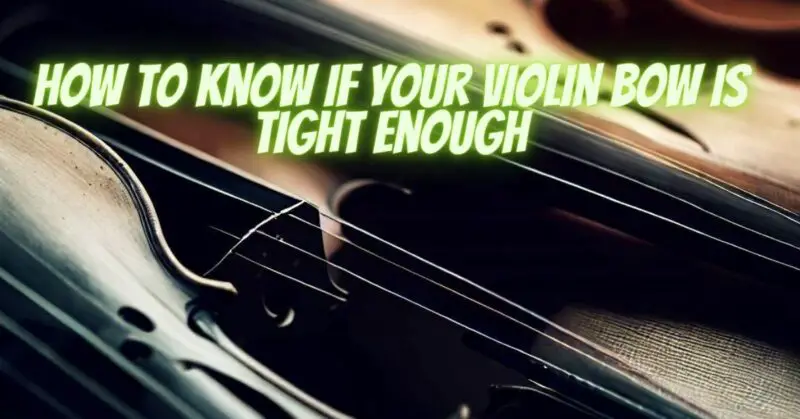Proper bow tension is crucial for achieving optimal playability, tone, and control on the violin. However, determining the right amount of bow tension can be challenging, especially for beginners. In this article, we will discuss key indicators to help you know if your violin bow is tightened to the appropriate tension, enabling you to achieve the desired sound and performance.
- Visual Inspection: Start by visually inspecting the bow. Hold the bow at eye level and observe the curve or camber of the bow stick. The ideal curve should have a gentle, even arc from frog to tip. If the bow appears overly concave or convex, it may indicate incorrect tension. Adjustments may be needed to achieve the proper curve, ensuring optimal contact with the strings.
- Bow Stick Flexibility: Hold the bow by the frog and press the tip of the bow gently against your other hand. Assess the flexibility or “give” of the bow stick. It should have a slight amount of flex, allowing for responsiveness and control during bowing. If the bow feels too stiff or unyielding, it may be overly tightened. Conversely, if it feels excessively flexible or “floppy,” it may indicate insufficient tension.
- Bow Hair Alignment: Observe the alignment of the bow hair in relation to the stick. When properly tensioned, the hair should evenly and uniformly contact the strings across its entire width. If you notice gaps or uneven contact between the hair and the strings, it could indicate improper tension. Adjust the tension to ensure consistent hair-to-string contact.
- Sound Production: Play a few notes on the violin to assess the sound produced. If the bow tension is too loose, the sound may lack clarity, projection, and responsiveness. It may also produce unwanted bow noise or “scratchiness.” Conversely, if the tension is too tight, the sound can become harsh, strained, or thin. Aim for a tension that allows for a balanced, resonant, and controlled tone.
- Playability and Control: Pay attention to how the bow feels in your hand and the control you have over it. Proper tension should provide a sense of stability and control while bowing. If the bow feels difficult to maneuver or lacks precision, it may indicate improper tension. Adjust the tension until you find a balance that allows for comfortable and controlled bowing.
- Seek Expert Guidance: If you are uncertain about achieving the correct tension, consult with a knowledgeable violin teacher, luthier, or experienced player. They can provide hands-on guidance and demonstrate the appropriate tension for your specific bow and playing style. Learning from experienced individuals can significantly help in developing a better understanding of optimal bow tension.
Conclusion:
Achieving the right tension in your violin bow is crucial for optimal playability, tone, and control. By visually inspecting the bow, assessing the flexibility of the bow stick, observing the alignment of the hair, evaluating the sound production, and considering the playability and control, you can determine if your violin bow is tightened to the appropriate tension. Regular practice and seeking guidance from experts will enhance your ability to achieve the desired sound and musical expression with confidence.


